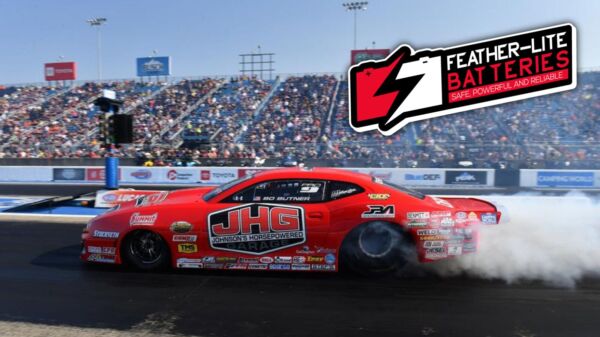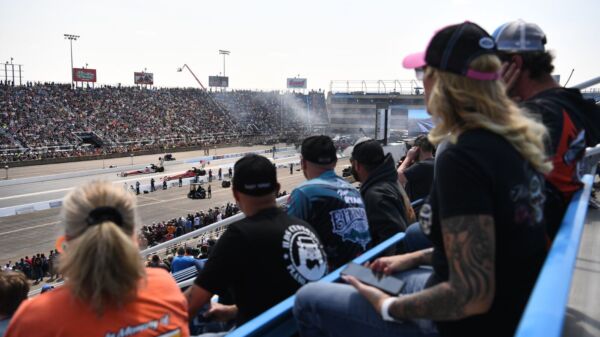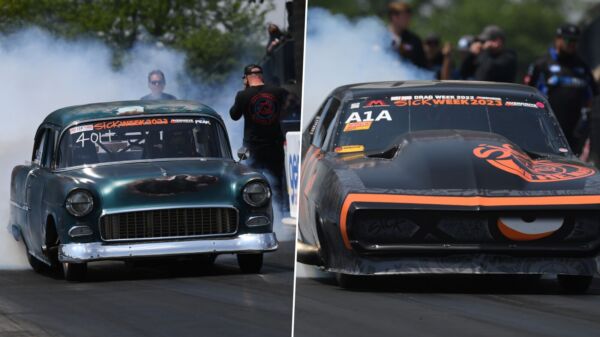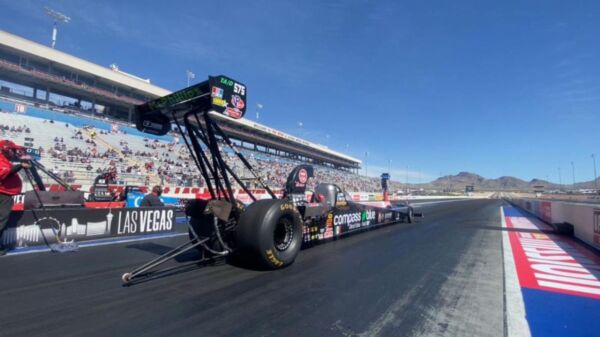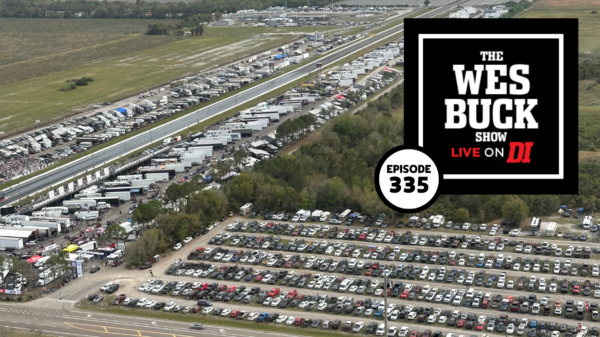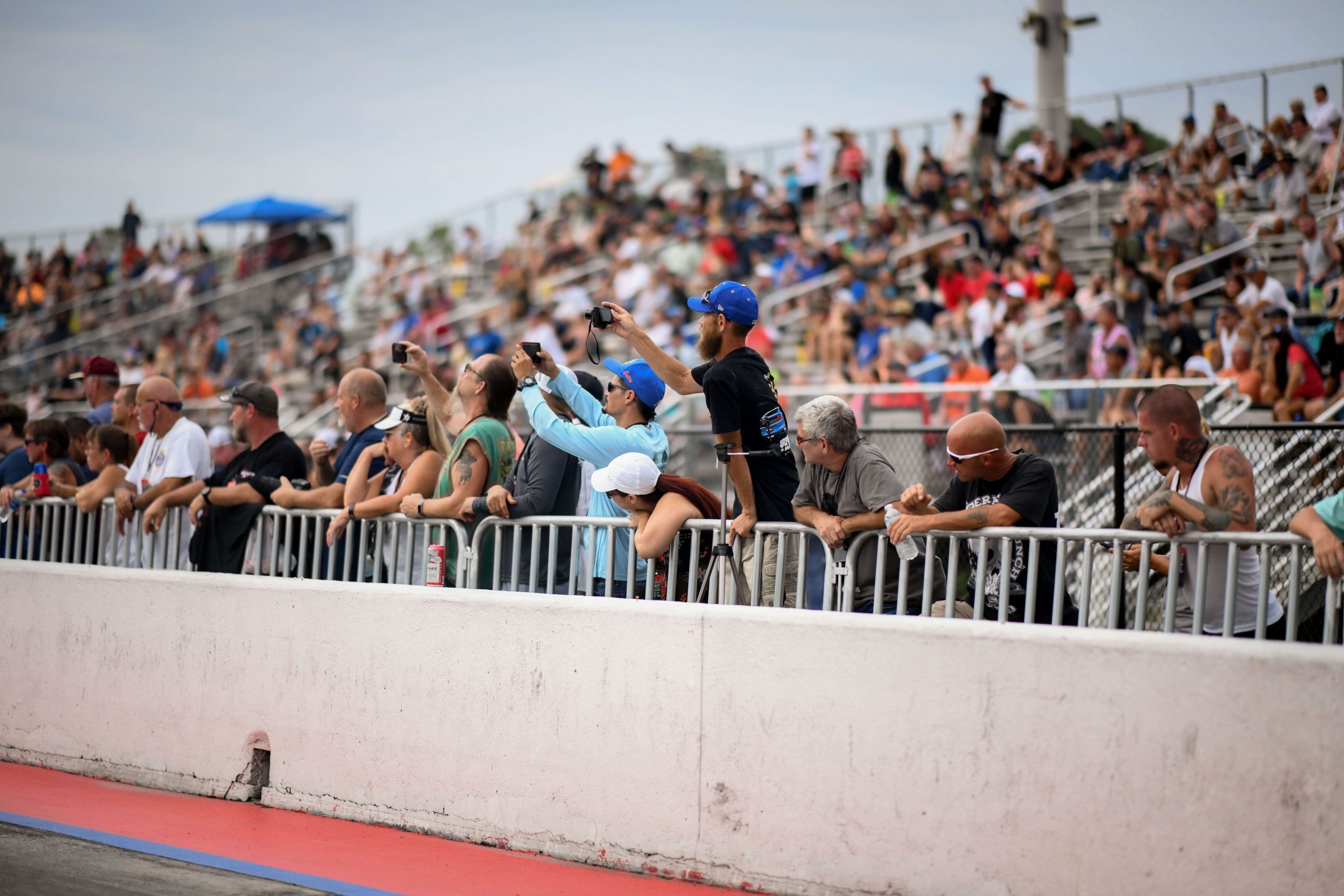Heading into the middle of summer, there’s plenty going on in drag racing. In the latest Drag Illustrated roundtable, the crew of Nate Van Wagnen, Wes Buck and Josh Hachat answered some of the recent hot topics, including NHRA Pro Mod, the Western Swing and Street Outlaws: No Prep Kings.
QUESTION: After instituting a rule that mandated manual shifting this season in NHRA Pro Mod, automatic shifters are now allowed again. What do you make of this sudden rule change back to the way it was?
NATE VAN WAGNEN: This is very much a “from the outside looking in” response, but to me it seems like this is a result of little to no communication between the NHRA Pro Mod rules makers and the racers. Did they try to talk to everyone before they instituted the manual shifting mandate? Or did they hear from the select few that felt this was the right way to go?
Teams had to hustle to get their cars updated to fit this new rule for the season, and it probably turned some teams away from racing this year. Now they’ve gone back on that mandate and negated all those changes. It seems like this whole issue could’ve been avoided by communicating with the teams and getting their input before making changes that would impact the whole class.
JOSH HACHAT: “Much Ado About Nothing” was a play by Shakespeare, and it also seems to apply here when it relates to this rule change back at the end of last year.
While sweeping changes, leveling the playing field, and “old school” were buzz words thrown around when it was determined NHRA Pro Mod was going back to manual shifting, those ideas never really got off the ground.
This whole idea — depending on the racers you talk to, I guess — was rooted in increased safety, preventing a shift into the next gear that could make a bad run even worse. Of course, from a fan’s perspective and even a bunch of veteran drivers, this move was destined to create added excitement, put things back in the driver’s hand and separate the “real drivers” from those just pressing a button.
I’m not sure we ever got close to that, which probably speaks to where this class is at the moment. With ProChargers continuing to dominate — effectively weeding out nitrous and turbo cars — the manual shifting really hasn’t seemed to factor into anything, at least driver or performance-related.
A sudden move back to allowing automatic shifters in the class also seems surprising, but there really wasn’t much of an impact. Instead, it seems to accentuate where this class is at the moment — treading water, without much of an identity and certainly lacking in fanfare (and participation) from previous years.
I’m not sure we should have counted on manual shifting to change that, but I’m hopeful this rule change at least opens the door to get some nitrous cars or a little more variety back in the class because it desperately needs it.
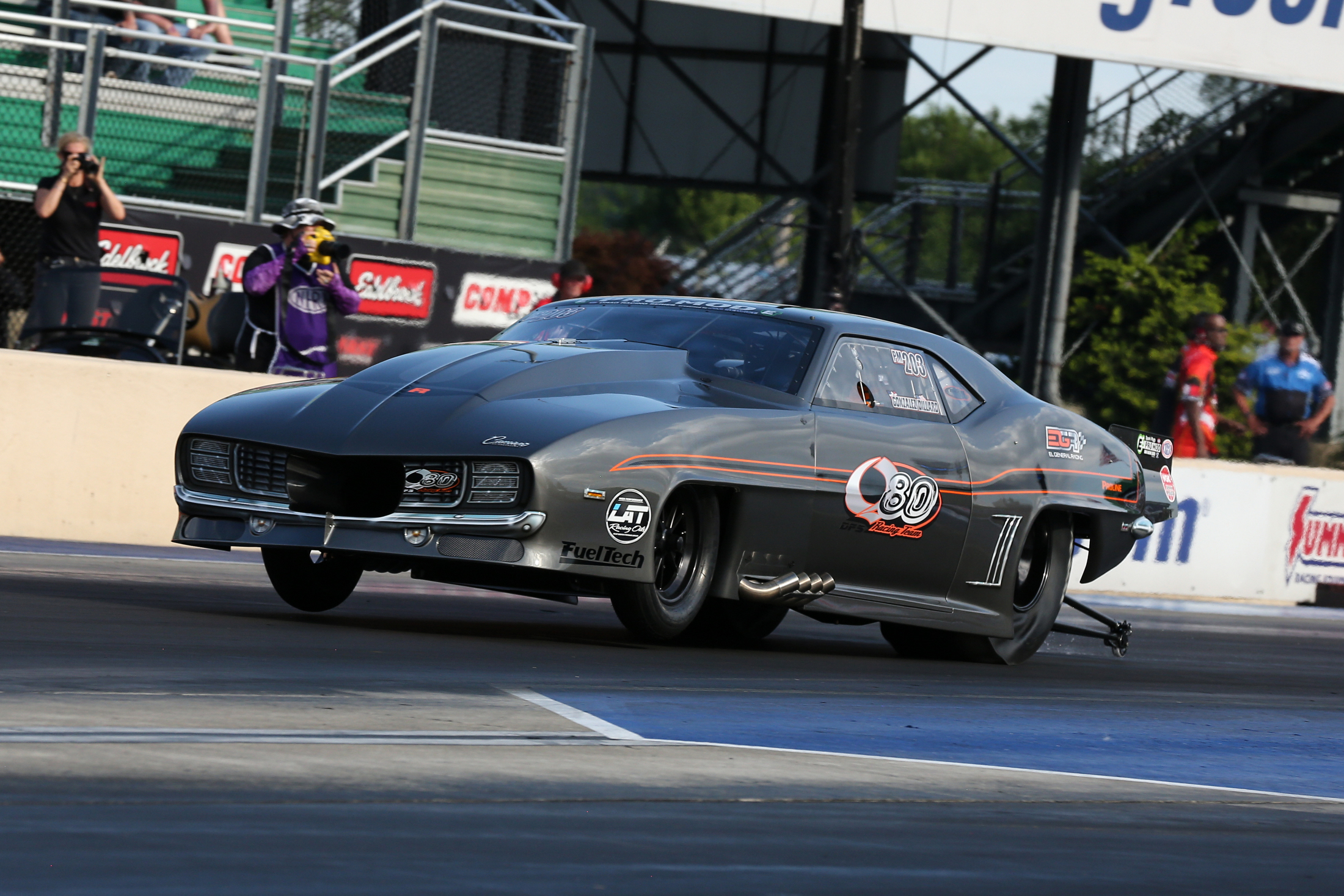
WES BUCK: This definitely seems like a situation that could have been avoided and is or at least was rooted in poor communication. If you remember, NHRA made this move in the name of safety. There was and likely still is a belief that cars shifting gears based on a pre-determined RPM is dangerous. A car goes out and shakes the tires, hits a preset engine speed and goes into the next gear making an already problematic situation even worse. The thought from NHRA, based on a slew of conversations with different people, was to eliminate this problem by making shifting gears something that required a specific manual input from the driver – pushing a button, pulling a lever, bumping a shifter forward or whatever else. In theory, it’s a solid solution. In practice, however, it’s perhaps more problematic than it’s worth at this stage in the game.
Again, if you look back, you’ll see that NHRA tried this once before in early 2010 – over a decade ago when a top-qualifying Pro Mod was posting up mid 5.8-second passes at speeds approaching 250 mph. NHRA made the rule change between the season opener in Gainesville and the series’ second stop in Houston. Two notable drivers went from qualifying in the top 8 of the field to DNQ status at the very next race with the exact same cars and crew (sans automatic, RPM-based shifting).
Within a few races (I think 3?), facing extreme pressure from racer/sponsors, NHRA had a change of heart and allowed auto shifters back into the class.
Today, over a decade later, cars are an easy two-tenths-of-a-second quicker and have picked up better than 10 mph, and the cost of competing at a high level in NHRA Pro Mod has significantly increased. The notion that a change like this would be widely accepted and/or successful seems hard to fathom.
Don’t get me wrong – I love the idea. I have been preaching for over a decade that driving cars like this shouldn’t be something anyone can do, and the manual shift rule absolutely accomplishes this. While there hasn’t been a ton of public conversation about this from racers as nobody wants to openly admit they’re struggling, there has been a lot of racers that are having a heckuva time plugging gears. Matter of fact, there are a few drivers that have had so much trouble they’ve considered leaving the category entirely or racing elsewhere.
For me, though, it goes back to that comment I made earlier about communication. NHRA Pro Mod isn’t strong enough right now, in terms of car count and participation, to absorb the losses that can come from a divisive rule like this. It’s a polarizing deal. Some people – think “Stevie Fast” Jackson – are all for it. Others – think rent-a-ride drivers or pro-level hobby racers – don’t understand the fuss, or why anyone would do anything to deter people from being involved – especially people that have the financial resources to race, but may not have the time or desire to develop the skill/talent required to consistently run their cars through the gears manually.
In fairness, driving these cars is nowhere near as easy as it looks or can sometimes sound. I can certainly make an argument and provide all the reasons why we want and need driving these cars to be spectacularly difficult, but that would only be necessary if I didn’t believe they already are – manual shifted or not.
Regardless, if safety is what you’re after – why not institute a rule that requires any of these incredibly advanced engine/car management systems to only allow the transmission to shift into second or third gear if the throttle position sensor (TPS) is at 100-percent? Seems like there is more than one way to skin this cat.
Lastly, does anyone really care? We ran a poll on the DRAG ILLUSTRATED Facebook page and found that 68-percent of our audience doesn’t really care if Pro Mods are manually shifted or not.
QUESTION: Staying on the NHRA Pro Mod front, what kind of turnout are you expecting for the race in Denver?
WES BUCK: Not great, and I hate to say that because I fancy myself an optimistic guy.
We here at DRAG ILLUSTRATED have a lot of experience with Pro Mod in Denver after three years on Thunder Mountain with the World Series of Pro Mod. We enjoyed 16 cars in our first year, 28 in our second and 11 in our third – for a race that had no entry fee and paid $100,000-to-win.
Even that kind of prize money – along with a previously unseen level of promotion, pomp and circumstance for doorslammer drag racing – wasn’t enough to empower us to consistently entice racers to travel that far West to race at nearly 10,000-feet of adjusted altitude.
Take all that and add into the mix that NHRA Pro Mod is suffering through its lowest participation in what seems like forever, all sorts of drama over auto shifters, a widely-perceived advantage for the ProCharger combination, the belief that you simply can’t run a nitrous car at altitude and you have everything necessary for a truly problematic situation. That’s before you throw in the fact that there may not be a single race on the NHRA Pro Mod schedule that has a sponsor this year and therefore pays a full purse (winner, runner up and round money).
I’m admittedly encouraged by the efforts of several Pro Mod racers, crew chiefs and team owners to bolster participation at Bandimere. Tuners like Phil Shuler and Mike Janis Jr., amongst others, are burning up phone lines trying to find racers willing to travel to Denver or are based out West. It’s always heartwarming and encouraging to see this type of behavior, but I also have to acknowledge that there seems to be less of this type of philanthropic support of Pro Mod today than there has been in over a decade and I’m not sure what that means.
NATE VAN WAGNEN: It’s not looking good, that’s for sure. As we learned through three years of the World Series of Pro Mod at Denver, a lot of these Pro Mod teams don’t want to make the haul out West to race at a high altitude. Combine that with an overall low participation level in the class this year and you end up with 10 cars on the entry list with just a few days left to enter.
It’s a shame because the Denver fans love to see Pro Mod racing, and after the year they had last season with local restrictions basically cutting out most of the major races at Bandimere, those fans deserve the best possible show. I’m sure you’ll see a few last-minute teams join the list, but I don’t think you’ll see a 16-car field.
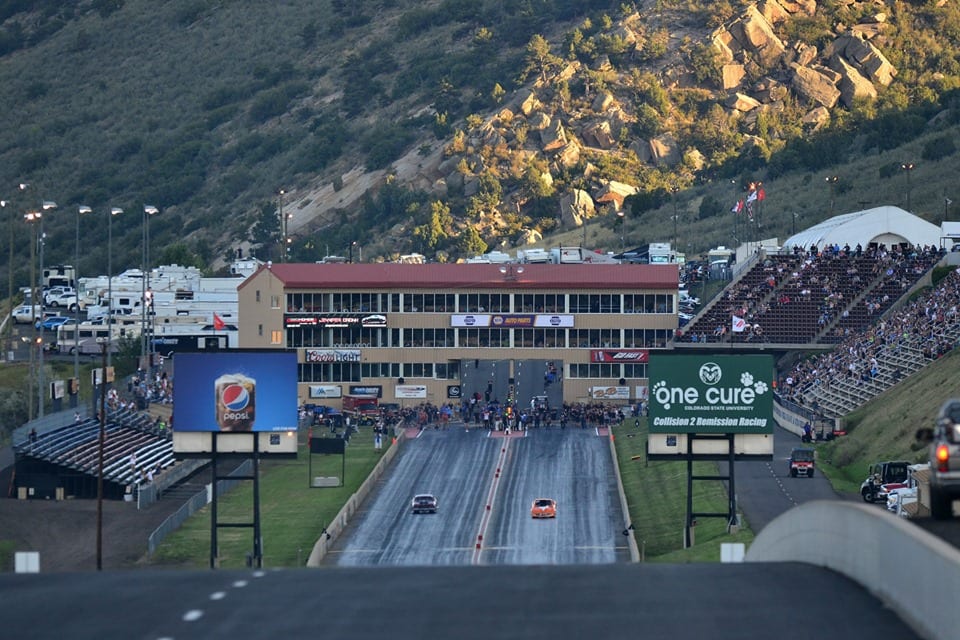
Photo by Katie Anderson
JOSH HACHAT: It would have been a bold move to do this in a year where things are steady. But to stick with this coming out of a pandemic with plenty of unknowns still out there, especially for teams in this class, seems a bit puzzling.
I thought a postponement to next year would have been in order considering the COVID stuff and all the uncertainty in the class, but I guess we’re forging forward.
Based on the entry list, it doesn’t seem as though it’s going to be a raging success. Bringing Pro Mods to Thunder Mountain is a difficult ask and many have been down that road before at the World Series of Pro Mod, with many top drivers choosing to sit out a race that paid six figures all because of the challenging race conditions.
In that regard, it’s not surprising to see only 12 entries for the race. I figured out would be right around that number and it’s unfortunate to see.
There’s not much that tops racing in Denver – challenges and all – but Pro Mod is definitely in a difficult spot these days. There are some major issues that need solving for the class to get back on track, and there are probably far bigger things at play right now than trying to haul thousands of miles to race in Denver.
QUESTION: There’s a lot of anticipation for this Western Swing, which includes the usual stops in Denver and Sonoma, and Pomona for the first time. All three races get night sessions and no fan restrictions, so will it be a Swing to remember, especially with a Pomona stop in July?
WES BUCK: It’s going to be lit. Three tracks and markets that have been on a pro-level drag racing fast for over a year – it’s bound to be pandemonium. I think we’ll see sellout crowds, traffic jams (making for great photos) and big time viewership numbers for the television broadcasts.
I’m not sure what to think of Pomona in July – feels awkward – but I understand they’re playing the hand dealt to them. We saw that a date change did little to negate the magic of the Gatornationals earlier this year, so I don’t see this summertime trip to Southern California being an obstacle of any kind.
NATE VAN WAGNEN: I think you’re going to see packed grandstands at all three stops on the Western Swing. All three tracks weren’t allowed to hold their national events last year, so the fans are eager to get back to the track and see some exciting racing. The night sessions just adds to the “wow” factor and will look really good on TV. So whether you’re going to one of these races or you’re planning on watching from home, I think it’s going to be a great show.
JOSH HACHAT: You can feel the anticipation and excitement building for these three races, and all three are going to be huge, in my opinion.
Denver has two days of night racing, as does Pomona and with a later than usual night session on Friday in Sonoma, the talk is you could see some records get broken in all four professional classes.
That’s always exciting, but the bigger thing to me is just the chance for West Coast fans to return in full force for the first time in two years. These fans, especially in California, have been locked down for a long time and many are eager to do just about anything that doesn’t involve being in their house.
I think you’ll see a measure of excitement and atmosphere on par with what we saw in Atlanta earlier this year for the final race at that track. It’s not the swang song for any of these three marquee facilities, but it’s going to be incredibly festive.
I can’t wait to see fans packed side-by-side at Bandimere Speedway, which suffered through a hellacious time last year fighting the local government. If anybody deserves three days of incredible racing and an electric atmosphere, it’s there. I’m also wildly curious about watching night racing at Pomona in July, which I believe has never happened before in NHRA history. I believe the series has done a great job setting up this trio of races and I can’t wait to see it all unfold.
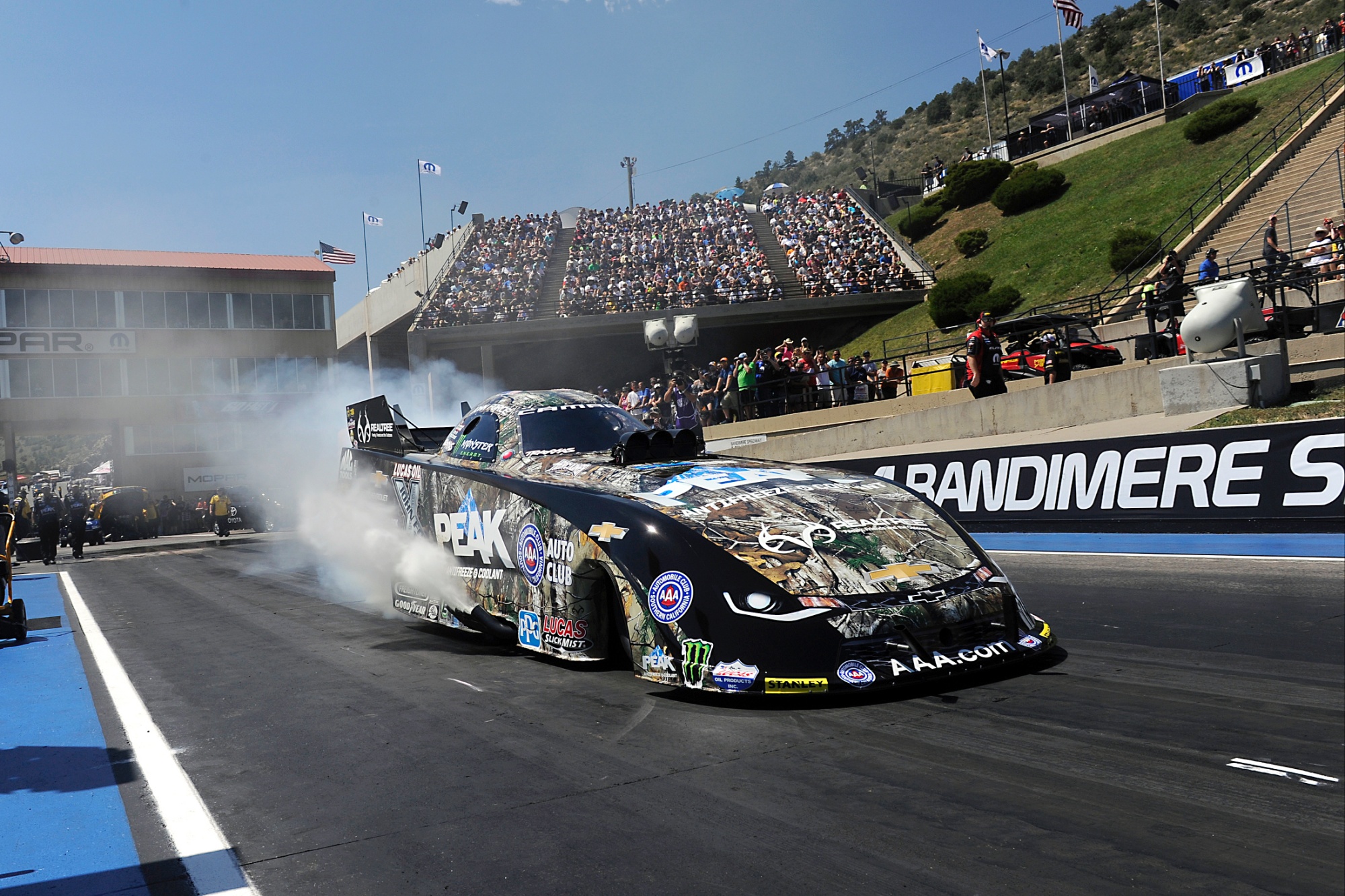
QUESTION: How impressed have you been by the turnout for the Street Outlaws: No Prep Kings race this year? It has to be considered one of the success stories of 2021.
NATE VAN WAGNEN: It’s truly incredible what the power of television and “celebrities” can do for racing events. We saw it with Pinks All Out in the late 2000s, and now we’re seeing it again with No Prep Kings. People are lining up in droves to pack the stands and stand along the fences at tracks that haven’t seen big crowds like that in years, if ever. It’s also another example of the pent-up demand for racing that developed over the last 12-plus months.
Even if you’re not a fan of the shows (full disclosure: I’ve seen maybe two episodes), you can’t deny that the Street Outlaws phenomenon has done great things for the sport. It’s put a ton of new eyeballs on drag racing, and more importantly, it’s put a ton of new butts in seats at track across the country. Tracks need big events like that to help justify the less profitable events throughout the year. The NPK series is doing big things for the sport, and I’m glad to see it.
JOSH HACHAT: Like Nate, I can count the episodes I’ve seen on one hand as well, but count me as a major fan of the entire Street Outlaws: No Prep Kings movement. Anyplace that has a full drag racing facility gets two thumbs-up from me.
They’ve figured out a formula that works incredibly well and that has to be commended. The amount of fans they’ve attracted to the sport has been huge and it’s been spectacular how well people have responded to their races this year. Going on hold for a full year is always nerve-wracking as you wonder if the interest in NPK will still be the same a year after finding other things to do.
If anything, the interest has only grown. There’s an endless amount of Street Outlaws series on Discovery and while I worry if it’s too much or a recipe for fan burnout, you can’t deny the serious impact it’s having on our sport right now. Seeing my home track, National Trail Raceway, packed like it was for the first race of the season was a sight to behold and an indication interest remains at a fever pitch.
WES BUCK: Without question, these reality television shows Street Outlaws and the spin-off No Prep Kings are the biggest things happening in drag racing right now. I’ve been saying for years that it is imperative that drag racing somehow, someway be a part of popular culture – to embrace celebrity and showmanship – in an effort to make it once again fashionable to be a “car guy”. That moment is upon us.
These TV shows have without question made it “cool” to have a fast car or performance-inspired vehicle. Major American auto manufacturers have played a significant role in this as well with the seemingly never-ending offering of vehicles from Dodge, GM and Ford that make 600-plus horsepower and feature line locks and launch control as factory options.
What these events are doing for drag strips across the country is impossible to overstate. To draw crowds in the tens-of-thousands for a drag race without the overhead/expense and logistical demands of a NHRA national event? It’s absolutely incredible.
Perhaps most importantly, these shows are introducing drag racing to new fans. The folks turning up at these events, for the most part, aren’t second- or third-generation drag racers or fans. These are people who have only recently been exposed to straight-line motorsports and want to see more and experience more than they can with the TV shows alone. It’s fantastic, and it’s the only way that our sport grows the way it needs to grow.
This story was originally published on July 13, 2021. 


